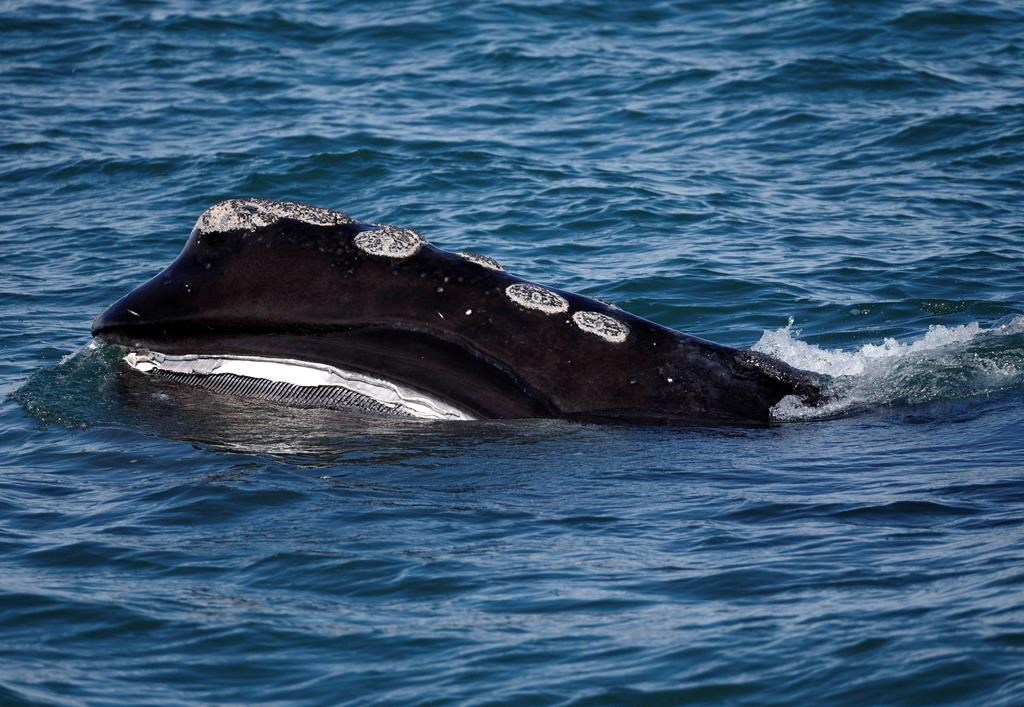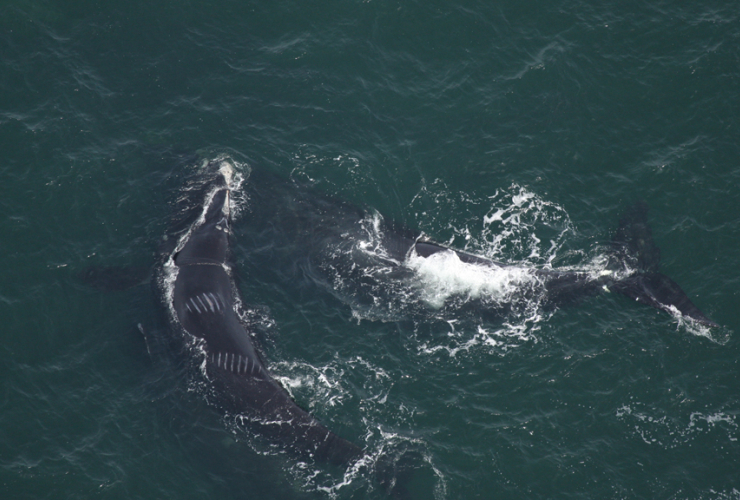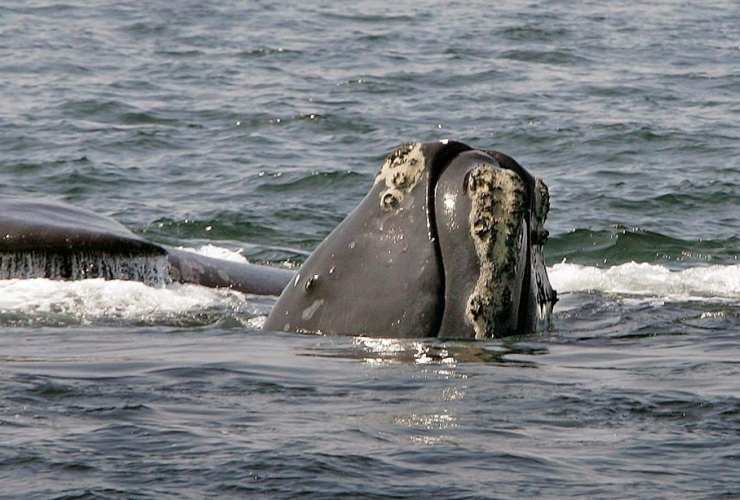A new marine robot part of a fleet of underwater gliders operated by the Ocean Tracking Network and Dalhousie University will help monitor endangered North Atlantic right whales to keep them from colliding with ships.
The newest glider will carry a hydrophone that can identify the calls of the right whales and report their locations, Fred Whoriskey of the Ocean Tracking Network said Monday. The University of New Brunswick and Transport Canada are also partners in the $3.6-million project that will span the next five years.
"There is no one way to effectively determine where the whales are at any given moment when they are in the Gulf of St. Lawrence," he said in an interview. "So we need to start blending our approaches."
Aerial surveillance is only good on sunny days with few waves, Whoriskey said, adding that hydrophones mounted on fixed buoys have their limitations. "This year we are deploying gliders into the shipping channels," he said. "They go down, listen and detect whale calls and come up to the surface periodically and broadcast information whether there are whales there or not."
"The gliders are about a metre-and-a-half long. They're banana yellow and they are shaped like a torpedo with wings," he said. Three gliders are being used in the Gulf this year, and the newest one, now being built, will replace one of those. Whoriskey said aside from listening for whale calls, the gliders are able to record water temperatures, oxygen levels and measure chlorophyll and algae.
Since June 2017, an unusually large number of right whales have died, reducing the population to fewer than 400 animals — a number that has some experts warning that the species is on the brink of extinction. Ship strikes and fishing gear entanglements account for most of the deaths.
Whoriskey said he believes his team's research, which includes analyzing the animals' movements and the location of food sources, will help the species bounce back.
The whales have traditionally spent the summer months in and around the Bay of Fundy, but in recent years have migrated further north to the Gulf of St. Lawrence, raising concerns about their presence in shipping lanes. Speed limits for ships and a number of fishery closures have been ordered in recent years after whales were detected in the region.
"You can see the species fighting back," Whoriskey said. "We've had calf production this year. It absolutely behooves us to do everything in our power to let them bounce back."
This report by The Canadian Press was first published July 19, 2021.





Comments